Silhouette Portrait vs. Silhouette Cameo: Which Is Better?
No modern-day home crafter can say that his creations are amazing without employing the help of at least one cutting machine, and there are many brands to choose from, such as Silhouette or Cricut.
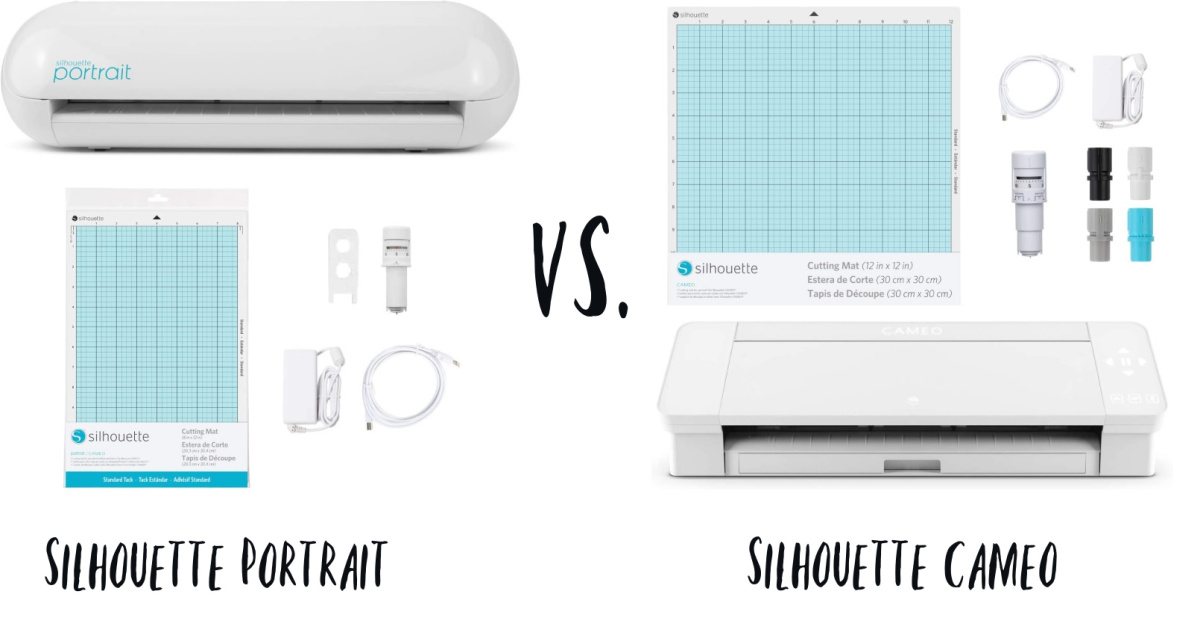
Speaking of which, Silhouette si one of the biggest manufacturers of computer-controlled cutting machines, and today’s article will be pitting two of their own devices against each other in order to determine which is the better cutting machine: the Silhouette Portrait and the Silhouette Cameo.
Table of Contents
Modern-day crafting
Having a wild imagination and the willingness to create something just for the sake of fun and relaxation has always been something that we as humans pride ourselves on, and in an age where staying at home is becoming the new norm, suddenly we have enough time to be creative.
Sure, pretty much every one of us took at some point of our lives some kind of arts and crafts classes at school, and a lot of us have to admit that those were probably some of our favorite classes ever (at least, it was for me).
Well, now that we’ve grown up doesn’t mean that we can’t do it again, only this time we can work with more than colored paper and a stick of glue.
In fact, nowadays’ crafts and homemade objects are so complex that even those of use with a lot of dexterity wielding a pair of scissors will no longer be able to keep up, and that is when technology can be of some help.
What Is the Silhouette Portrait?
The Silhouette Portrait 3 is a compact PC-controlled cutting machine created by Silhouette, and it is the 3rd generation of the Portrait family.
Showcasing an incredibly lightweight and compact build, the Portrait 3 is the perfect machine to take to events, craft parties, or any other scenario where you need to be creative on the go.
This portability is further enhanced by the fact that it features Bluetooth connectivity, so fewer wires, and it also specializes in cutting materials that are usually the most sought after during special events, such as custom stickers, printed heat transfer decals, temporary tattoos, etc.
What Is the Silhouette Cameo?
As far as the Silhouette Cameo 4 goes, this machine trades portability with raw cutting power and versatility, being a machine that is mostly geared towards users that work from home and craft a lot, usually in a dedicated crafting room.
In fact, as of the writing of this article, the 4th generation Silhouette Cameo is the fastest and most powerful of all Silhouette machines, and it was made to be a hallmark of what it means to be a home crafter.
Similarities Between the Silhouette Portrait & Cameo
Since both machines are essentially computer-controlled cutting tools manufactured by the same company, they are bound to have a lot of similarities between them, probably more than differences.
Because of that, the perfect way to compare the two is to first look at what you have to gain if you bought either of them, and only then should we talk about what sets each of them apart.
Purpose
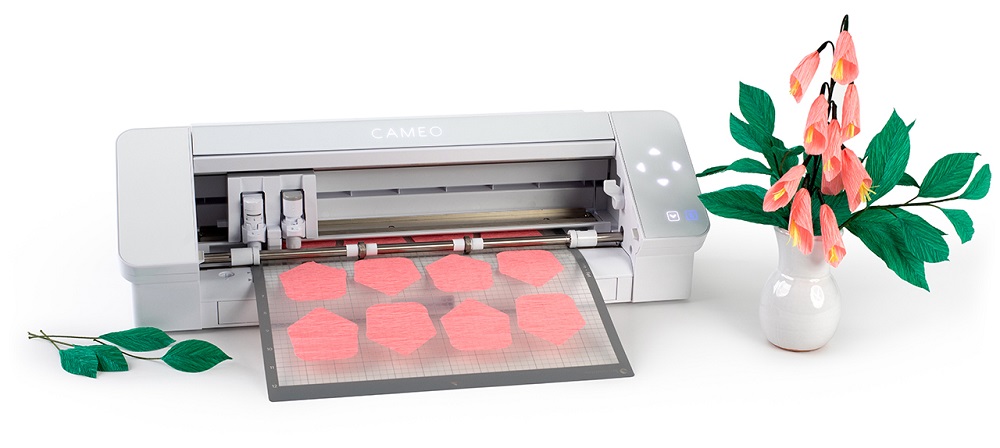
This one is a bit of a no-brainer since both the Silhouette Portrait and the Silhouette Cameo are computer-controlled cutting machines used to cut intricate designs into a wide variety of materials.
Sure enough, the Silhouette Portrait is a bit more limited due to its build and cutting power, so suffice it to say that everything that the Portrait can cut, the Cameo can cut as well, but not the other way round.
Software
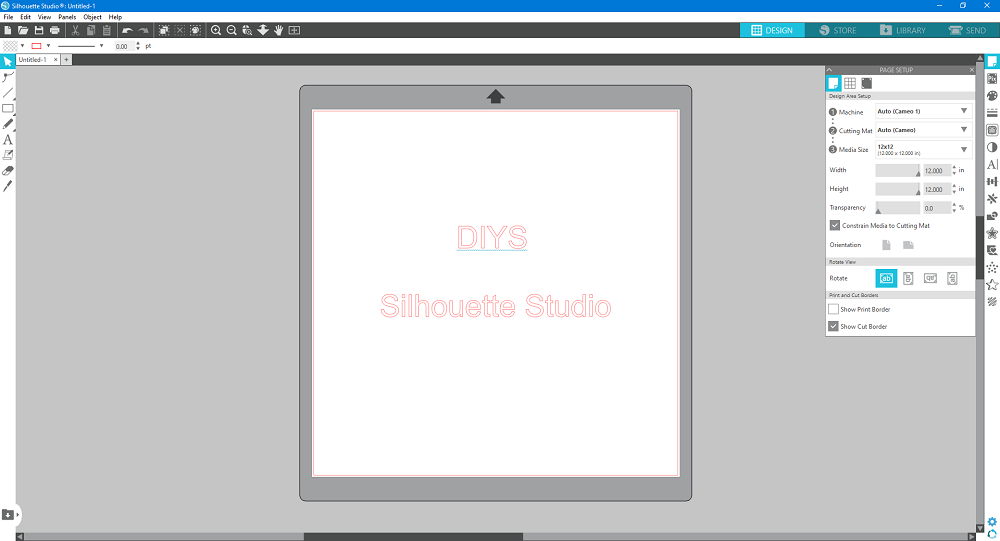
Both the Portrait and the Cameo can be viewed as the hands that are doing the cutting, and if that’s the case, then Silhouette Studio is the brains behind everything since this software is required to design your cutouts and program your machines.
Both the Silhouette Portrait and Cameo use silhouette Studio, although the manufacturer has been giving a lot of thought into further emphasizing Portrait’s portability by making a dedicated mobile app called Silhouette Go.
This dedicated mobile app is meant to be the perfect companion to allow you to create wherever and whenever you want.
Matless Cutting Capabilities
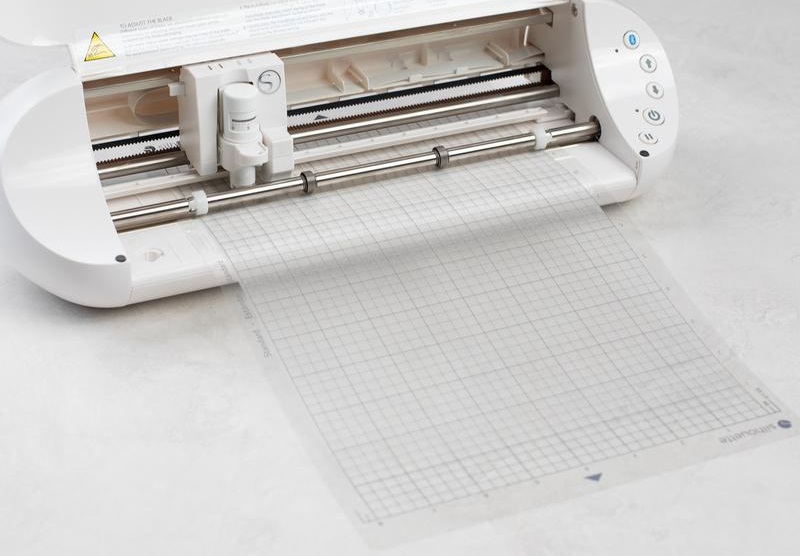
One thing a lot of us are used to when dealing with cutting machines is having to deal with cutting mats that hold the materials in place.
Sure enough, they get the job done, but the truth is that when you’re short on time, having to place the cutting mat and then the material in a correct way over it can definitely take up a lot of time.
Fortunately enough, both the Silhouette Portrait and Cameo feature matless cutting options, although it does depend on the material type.
For example, there are a lot of materials with liners or backing, such as vinyl, heat transfer, and sticker sheets, that can be fed directly into the Portrait 3 without a cutting mat.
Not only that, but both devices offer a special Pop-out cutting feature for paper and cardstock materials you don’t need a cutting mat either.
Note: If you have both machines, the cutting mat can be swapped between them.
Automatic Tool Detection
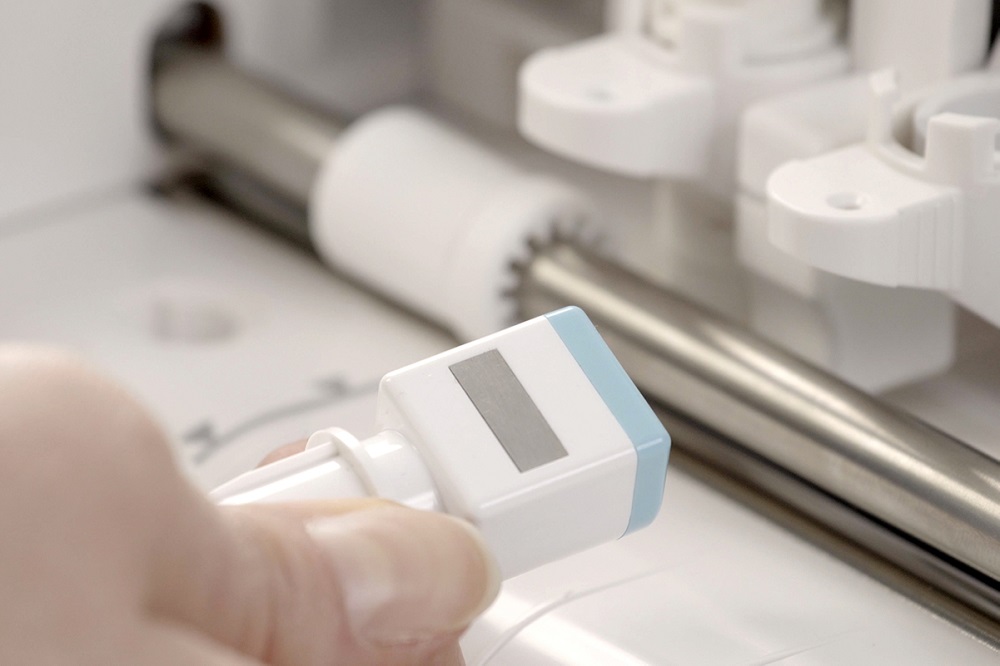
Both machines can cut through a wide variety of materials, but that doesn’t mean that they have just one cutting tool for all materials.
Cutting blades come in a variety of shapes and sizes depending on the materials, and if you’re interested in tasks other than cutting, such as embossing, there are specialized tools for that as well.
Well, it’s in our nature to make mistakes, and not noticing what tool is installed on a machine at any given time would seem like something that happens very often. Thankfully enough, both the Silhouette Portrait and the Cameo come with an Automatic Tool Detection system.
This feature works by automatically detecting which tool you’ve put in the machine, and it then adjusts your software settings accordingly.
AutoBlade
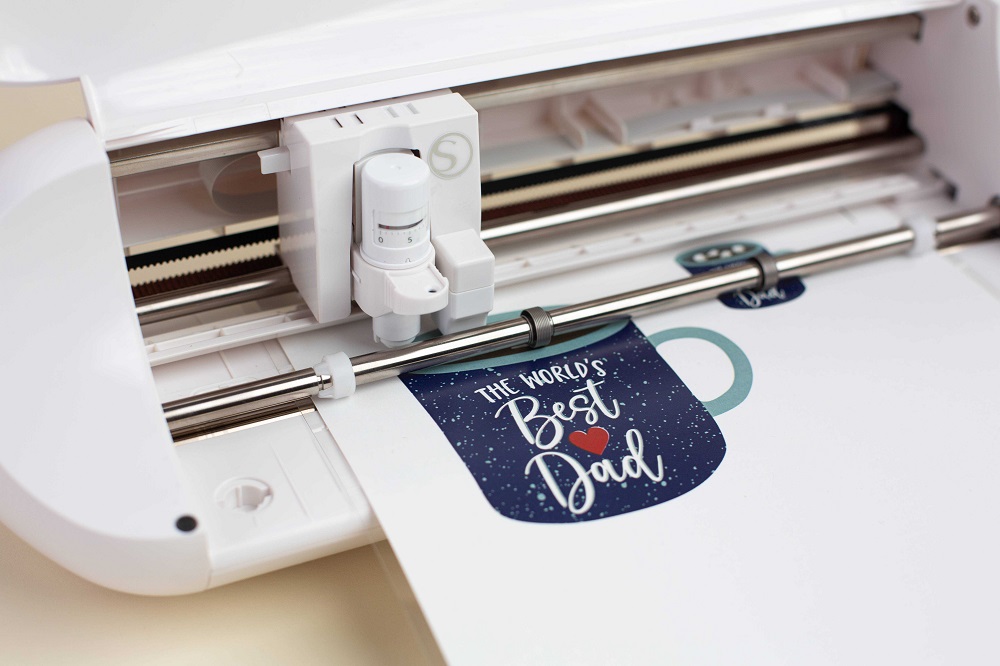
Somewhat similar to the Automatic Tool Detection feature, the AutoBlade feature is something that both the Portrait and the Cameo have.
It allows the machine to set itself to the proper level of your job depending on what type of material you are cutting, adjusting the cutting force accordingly (you don’t need 5000g/f just to cut paper after all).
PixScan Technology
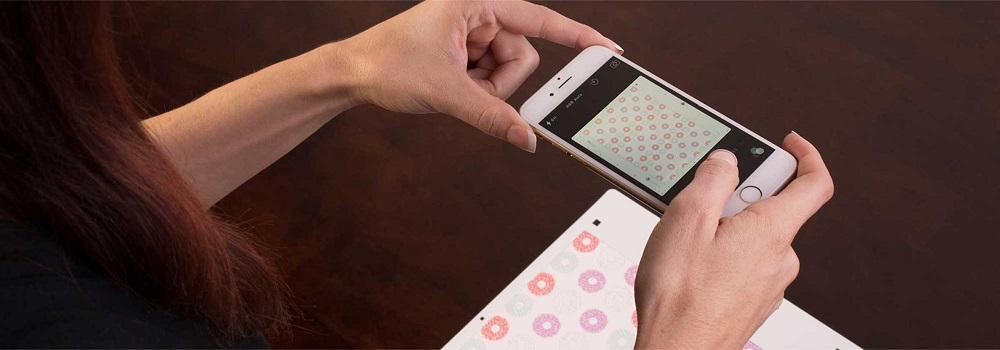
PixScan technology is a proprietary system developed by Silhouette and implemented in most of their cutting machines, and it allows you to cut precisely using a printed image or position cut lines in a specific location on your material while using your camera or scanner as a basis.
This means the Silhouette Studio becomes perfect for digitizing a scanned image or turning a hand-drawn sketch into a cut job, and since both the Portrait and the Cameo use Silhouette Studio, they are both PixScan-compatible.
Bluetooth Connectivity
Both machines can work wirelessly, which can greatly help by reducing the need to carry around cables whether you’re traveling with the Silhouette Portrait and by making sure there’s one less wire to worry about tripping over in the crafting room if you’re going with the Cameo.
The Bluetooth connection is quite stable, and it is also fast enough to allow firmware updates to be performed at acceptable speeds, although using a wired connection is still optimal.
Print & Cut
Both the Portrait and the Cameo have drawing capabilities, but if you don’t want to waste time drawing and then cutting, you can link your cutting device to your home printer.
This feature allows you to create custom Print & Cut projects with your home printer and use then use the cutting machine to cut them out of the material.
This features greatly benefits the Portrait due to its lack of a Dual-Carriage system, as it saves you a lot of time simply making the Portrait cut what the printer already drew, instead of having the Portrait do both the drawing and the cutting.
More so, since the Portrait is primarily specialized in stickers, printed heat transfer decals, and temporary tattoos, you will be using this feature constantly.
Noise Levels
While this is more of a common drawback than a common feature, you should know that both machines generate pretty much the same noise levels, although we do have to mention that, if you are to cut much harder materials with the Cameo, it will tend to get a bit noisier than the Portrait.
However, this is something that is to be expected, as the only reason why the portrait is considered a bit more silent is that it can’t cut noisier materials in the first place.
Differences Between the Silhouette Portrait & Cameo
Now that we’re done with the main similarities between the two, it’s time to get started with what you were actually planning to read about: the differences between the Silhouette Portrait and the Silhouette Cameo!
Design
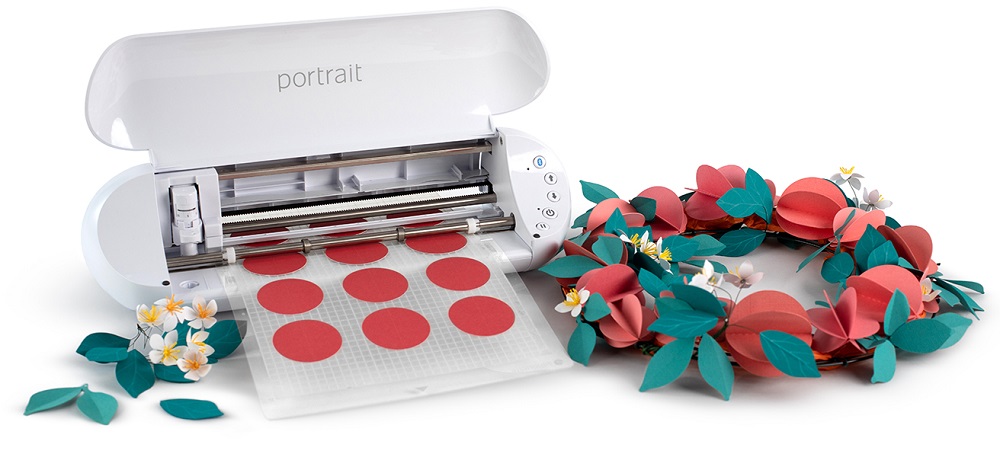
The first thing that you’ll notice when placing the two machines side by side is the fact that they are significantly different in terms of sheer size, with the Silhouette Portrait being half the size of the Silhouette Cameo.
While we’ve already pointed out earlier that the Portrait’s main selling point is its portability, knowing just how different these two machines are in terms of size and weight can be a real deal-breaker for some.
Standing at just 16.2 in. x 5.5 in. x 4.4 in. (41.1 cm x 14 cm x 11.2 cm) and weighing in just 3 lbs 8 oz (1.6 kg), the Silhouette Portrait 3 will take up a lot less room in your home.
On the other hand, the Cameo stands at a very bulky 22.44 in. x 7.68 in. x 6.69 in. (57 cm x 19.5 cm x 17 cm) and weighing in 10 lbs 6.4 oz (4.7 kg), nearly 3 times the weight of the Portrait.
If you do decide to go with the Cameo instead of the Portrait, be prepared to make a lot of room where you put it and make sure that whatever piece of furniture you’ll be placing it on can handle the extra weight, along with whatever vibrations may appear during the cutting process.
Cutting Force
The Cameo 4 is much heavier and much larger than the Portrait, and this naturally translates into a much higher cutting force.
You see, while both devices have a 210g/f cutting force, keep in mind that the Cameo 4 has a special dual-carriage feature, and the second carriage allows for a cutting force of 5000 g/f (5kg/f), the highest cutting power of any machine in its class.
This tremendous cutting power allows the Cameo to handle materials that the Portrait could never even dream of cutting, just as long as you also remember to use the right blades for the job.
However, one thing that may seem interesting at first is the fact that despite the much larger cutting power, both the Silhouette Portrait and the Cameo can only cut through materials up to 2mm thickness.
Another reason why the Cameo 4’s much larger frame is useful is that it allows the machine to have a much larger cutting area, making the Cameo ideal for large-scale projects.
That being said, while the Portrait can only handle projects up to 8 in. x 12 in. in size (8 in. x 60 ft. with lined media), the Cameo can easily cut materials that are up to 12 in. x 24 in. in size (12 in. x 60 ft. with lined media).
Intuitiveness
Silhouette cutting machines are all created to be as simple as possible, both in terms of how you use the hardware and how you program the software.
Admittedly, Silhouette Studio could indeed use some improvements, as it is a lot harder to learn and navigate through compared to the proprietary software of other cutting machines, such as Cricut’s Design Space.
However, because the Silhouette Portrait is much smaller and therefore much more limited in terms of capabilities, it is also easier to get used to, as you can consider it a Cameo for beginners.
Add that to the fact that Silhouette is planning to release a dedicated mobile app for the Portrait called Silhouette Go, and controlling it has the potential to become even easier.
Unique Features
Once you’ve showcased the similarities between two products and then compared their common features, the next step is to present what unique feature each of them has that the other doesn’t, and that will finally solidify your decision on which device to get.
Unique Silhouette Cameo 4 Features
Dual-Carriage
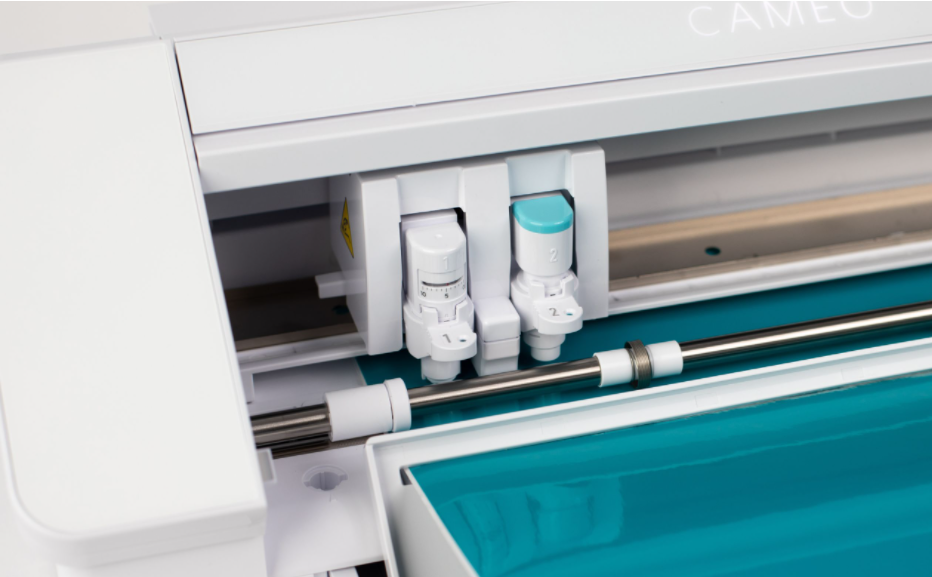
The biggest Godsend that any machine can provide you with is an ability that can allow you to greatly save time, and one perfect example of such a feature is the Dual-Carriage system that is available on the Cameo.
The Dual-Carriage system is basically a feature that allows you to attach two tools at once to a machine so that it can perform two different tasks on two different materials simultaneously, basically cutting the processing times in half.
This means that you can cut or sketch using any of the available tools that are supported by the Cameo.
However, you need to remember that there are differences between the two carriages, as Carriage 1 is meant for standard cutting with the included AutoBlade, while Carriage 2 provides more power for use with speciality tools, like the Rotary Blade or the Punch Tool.
More so, since you’ll need to program two different carriages to work with 2 different tools to perform 2 different tasks, you’ll need to perform some extra programming in Silhouette Studio before you actually begin cutting.
Cross Cutter
One last feature that the Cameo has that is not present in the Portrait is the Cross Cutter, and while it may be a simplistic tool (it makes straight cuts into the materials), it can be very helpful when you need to cut vinyl or heat transfer without a cutting mat.
Not only is it much faster, but it also performs perfectly straight cuts, unlike traditional methods such as using scissors.
Unique Silhouette Portrait Features
Silhouette Go
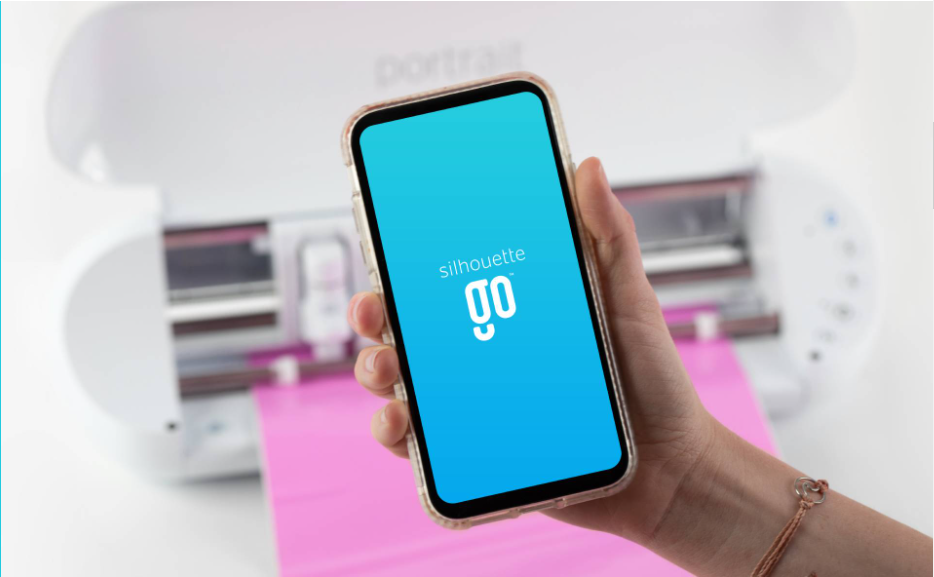
While both cutting machines are powered by Silhouette Studio, the manufacturers decided to take Portrait’s image as a portable device even further by creating a dedicated mobile app called Silhouette Go.
With the help of this app, you can go ahead and create things while on the road or at events like parties or weddings without having to carry around your PC or even your laptop.
More so, it makes creating and cutting designs even easier since you can go ahead and start drawing as soon as inspiration hits you, just by pulling your phone out of your pocket.
Comparison Table
The 2 machines could not be any more different, but for those of you that aren’t too much into small talk and just want to see the hard facts, we’ve prepared a table where we showcased the differences between the two machines.
| Name | Silhouette Portrait 3 | Silhouette Cameo 4 |
|---|---|---|
| Size | 16.2 in. x 5.5 in. x 4.4 in. (41.1 cm x 14 cm x 11.2 cm) |
22.44 in. x 7.68 in. x 6.69 in. (57 cm x 19.5 cm x 17 cm) |
| Weight | 3 lbs 8 oz (1.6 kg) | 10 lbs 6.4 oz (4.7 kg) |
| Can cut | Yes | Yes |
| Can draw | Yes | Yes |
| PixScan Technology | Yes | Yes |
| Cutting force | 210 g/f | Carriage 1: 210 g/f Carriage 2: 5 kg/f |
| Cutting size | 8 in. x 12 in. with a cutting mat 8 in. x 60 ft. with lined media (using a Roll Feeder) |
12 in. x 24 in. with a cutting mat 12 in. x 60 ft. with lined media |
| Matless cutting | Yes | Yes |
| Auto-Blade | Yes | Yes |
| Cross Cutter | No | Yes |
| Dual-Carriage | No | Yes |
| Maximum Material Thickness | 2 mm | 2 mm |
| PC Connection Required | Yes | No |
| Noise Level | Loud | Loud |
| Dedicated Mobile App | Yes | No |
| Wireless Connection (Bluetooth) |
Yes | Yes |
| Price | Check Price on Amazon. | Check Price on Amazon. |
Drawbacks
For all their features and all their pros, machines are still machines, and both the Portrait and the Cameo have been around long enough for users to have a basic idea of their shortcomings as well.
With that being said, the next section of the article is dedicated solely to the drawbacks of each of the two machines.
Silhouette Portrait Drawbacks
The first drawback that you’ll notice (or better yet, hear) is the fact that the Portrait is indeed very loud, and this is further emphasized by the fact that it is rather surprising how such a small device can make so much noise.
While this may not be much of an issue if you’re traveling with it or using it at a party where there’s already a lot of background noises, if you plan on using it during the night in a room that isn’t soundproof, you’d better think again.
Other common issues that many users have reported regarding the Silhouette Portrait are frequent Bluetooth connectivity issues or the fact that the machine may sometimes have difficulties detecting the starting square, prompting them to improvise with a flashlight.
Silhouette Cameo Drawbacks
While we did put the spotlight on the Cameo throughout our article, we can’t go ahead and wrap things up without mentioning some of the drawbacks as well.
For starters, many users complain that using Silhouette Studio with the Cameo can be very hard because of the sheer number of features and options that are available. To make matters worse, manuals for using the Cameo are not available online, or at least not from official sources.
Performance-wise, many users are disappointed that such a powerful cutter can’t handle leather at all, that it can sometimes have issues with making 12-inch cuts evenly. More so, some materials require that you perform the cuts twice just to make sure that the job is done right.
Lastly, one issue that it has in common with the portrait is the fact that many users reported issues with the Bluetooth connection, some even stating that they never got it to work in the first place.
Silhouette Portrait vs. Cameo: Who Is the Winner?
After analyzing both machines and weighing in the pros and the cons, we reached the conclusion that the superior model in a standoff between the Portrait and the Cameo is by far the Cameo.
Admittedly, both machines share a lot in common since both of the machines are good vinyl cutters, and both are powered by the Silhouette Studio software.
Suffice it to say that everything the Portrait can do, the Cameo can do better, faster, and with more materials, with the only notable and redeeming quality of the Portrait being its reduced size and weight that make it a lot more portable.
However, it all boils down to what you actually need since, if you’ve just started with crafting at home, you might actually be better off getting the Portrait since its limitations also make it easier to learn, and the fact that the Portrait is a lot cheaper than the Cameo is a plus.
FAQ: More About the Silhouette Portrait & Cameo
What can a Silhouette Portrait do?
The Silhouette Portrait is a compact PC-controlled cutting machine that specializes in cutting vinyl with ease along with other thin materials such as paper.
However, it can handle harder materials just as well, cush as magnet paper, planner stickers, card stock, heat transfer material, sticker paper, and more.
Because of its cutting capabilities, the Silhouette Portrait is ideal for custom stickers, printed heat transfer decals, temporary tattoos, and more
What is the difference between Silhouette Portrait and Cameo?
The most notable difference between the Silhouette Portrait and the Cameo is their size and weight.
While the Silhouette Portrait’s size is at 16.2 in. x 5.5 in. x 4.4 in. (41.1 cm x 14 cm x 11.2 cm) and weighs a little over 3 lbs 8 oz (1.6 kg), the Cameo is much larger, as it stands at 22.44 in. x 7.68 in. x 6.69 in. (57 cm x 19.5 cm x 17 cm) weighing in 3 times as much as the Portrait, namely 10 lbs 6.4 oz (4.7 kg).
However, the much bulkier frame allows the Cameo to cut much harder materials of much larger sizes, and it also comes with a lot of extra features that the Portrait lacks, such as the Dual-Carriage system, or having a Cross Cutter.
Does Silhouette Portrait cut A4?
Because the Silhouette Portrait is among the smallest Silhouette cutting machines available, it is specialized in cutting materials of much smaller sizes, including A4.
For example, the Silhouette Portrait has a cutting area of 8 in. x 12 in., and since the standard size of A4 is 8.3 in. x 11.7 in., the Portrait is perfect for this format.
What can Silhouette Portrait 3 cut?
As far as size goes, the Portrait 3 can cut designs that are up to 8 inches in width and up to 60 feet long (as long as you are using a Roll Feeder), and by using the right materials, the Portrait can also perform matless cutting.
Is the Silhouette Cameo better than Cricut?
Cricut and Silhouette are constantly updating their cutting machines both in terms of hardware and software, and any differences between their flagship products are usually so insignificant that they barely make comparing the brands worthwhile.
However, one thing that you may be interested in is that Cricut machines have an easier learning curve due to their Design Space software’s optimization.
Other than that, you can go ahead and buy whichever cutting machine fits your needs and your budget better since both manufacturers have big discounts whenever a sale is on.
What is the Silhouette Cameo used for?
The Cameo is Silhouette’s flagship cutting machine, and it is designed for both personal and professional use that can cut paper, cardstock, vinyl, fabric, and other materials.
Although bulkier and heavier than other models, it is also far more versatile and capable of more operations on a much wider variety of materials.
This PC-controlled cutting tool can easily handle projects that are as small as 1/4 in. or as wide as 12 in., and as far as length goes, there is no limit to how big the material can be thanks to the built-in roll-feeder.
Can you use Silhouette Cameo without a computer?
Yes, the Silhouette Cameo can be used without having to be constantly connected to a computer, although this feature is optional.
However, there are times when using a wired connection is recommended, such as when performing software updates, since the Bluetooth connection is not exactly very fast.
Which is better, Silhouette Cameo or Curio?
If you’re looking to compare the Cameo and the Curio strictly from a cutting point of view, then the Silhouette Cameo is indeed the superior machine.
However, the Curio is designed not to be an alternative to the Cameo, but rather a complementary device, since the Cameo is better at cutting, while the Curio can do other things, such as engrave and emboss.
Silhouette Portrait vs. Cameo: Closing Thoughts
We’ve reached the end of our article, and we hope that we’ve shed enough light on the Silhouette Portrait and the Silhouette Cameo for you to get a better idea of which is the better cutting machine.
One thing you should take into consideration, though, is that these machines were never meant to compete with one another, but rather they were created to be used in different scenarios.
That being said, while the Portrait is great for cutting and crafting while on the road, the Cameo is better at cutting heavy-duty materials of much larger sizes, and it comes with a lot of tools that can help you greatly save time.
As such, if you find yourself frequently in need of a cutting machine both while at home and while on the road while you’re away attending special events (weddings, parties, etc.), then you can go ahead and get both the Silhouette Cameo and the Silhouette Portrait.
Here on DIYS, we recognize the potential of all cutting machines, and because of that, we’ve covered articles on machines from other manufacturers as well, such as Cricut cutting machines, so make sure you check them out as well.
Speaking of covering articles, if there are other related subjects that you’d like to read about that we haven’t yet covered, let us know about it in the comments section below, and we’ll go ahead and a brand-new article about it that is as in-depth as the one above.
The post Silhouette Portrait vs. Silhouette Cameo: Which Is Better? appeared first on DIYs.com.